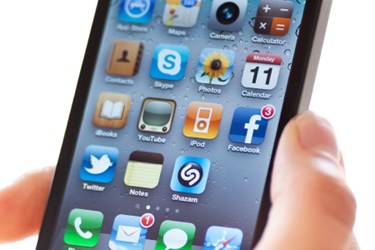Docs Prescribe Hospital-Designed Apps

By Katie Wike, contributing writer

Mobile applications designed by doctors and hospitals are gaining popularity as a way to keep patients on track.
There are thousands of medical apps available, but few are actually designed and recommended by doctors. That’s why hosptial-designed apps are gaining ground — according to researchers, “Hospital-developed apps are more likely to become part of patients’ daily routines because of they are prescribed and used under medical supervision.”
iHealth Beat notes apps such as these can be helpful because they alert providers to problems before they develop into larger issues, as well as send instructions, messages, and reminders to patients.
“When our patients have severe pain we usually come up with a great plan and medication regimen when we see them in the clinic, but within four weeks the plan kind of falls apart for a variety of reasons,” Mihir Kamdar, associate director of the division of palliative care and director of Mass General’s cancer pain clinic told the Wall Street Journal. “If we can have more points of contact in between visits, we can see who might be developing pain at a crisis level, control it better and keep them out of the hospital.”
Early evidence shows one particular app even helped reduce readmissions and has the potential for cost savings. Even surgeons benefitted as they were better able to look at the progress of incision healing by reviewing photos patients took with their devices and uploaded daily compared with seeing patients in person at one and three weeks post surgery.
Adrien Negro, a 32-year-old patient with metastatic thymic cancer, is someone who uses an app to manage his condition. “I’m on my phone constantly anyway and so I used it to track my pain,” Negro says, “It was good knowing I always had access to the doctors. I don’t have to worry about forgetting things, because I had jotted down notes so I could remember, ‘yeah, last Tuesday, this happened.’”
